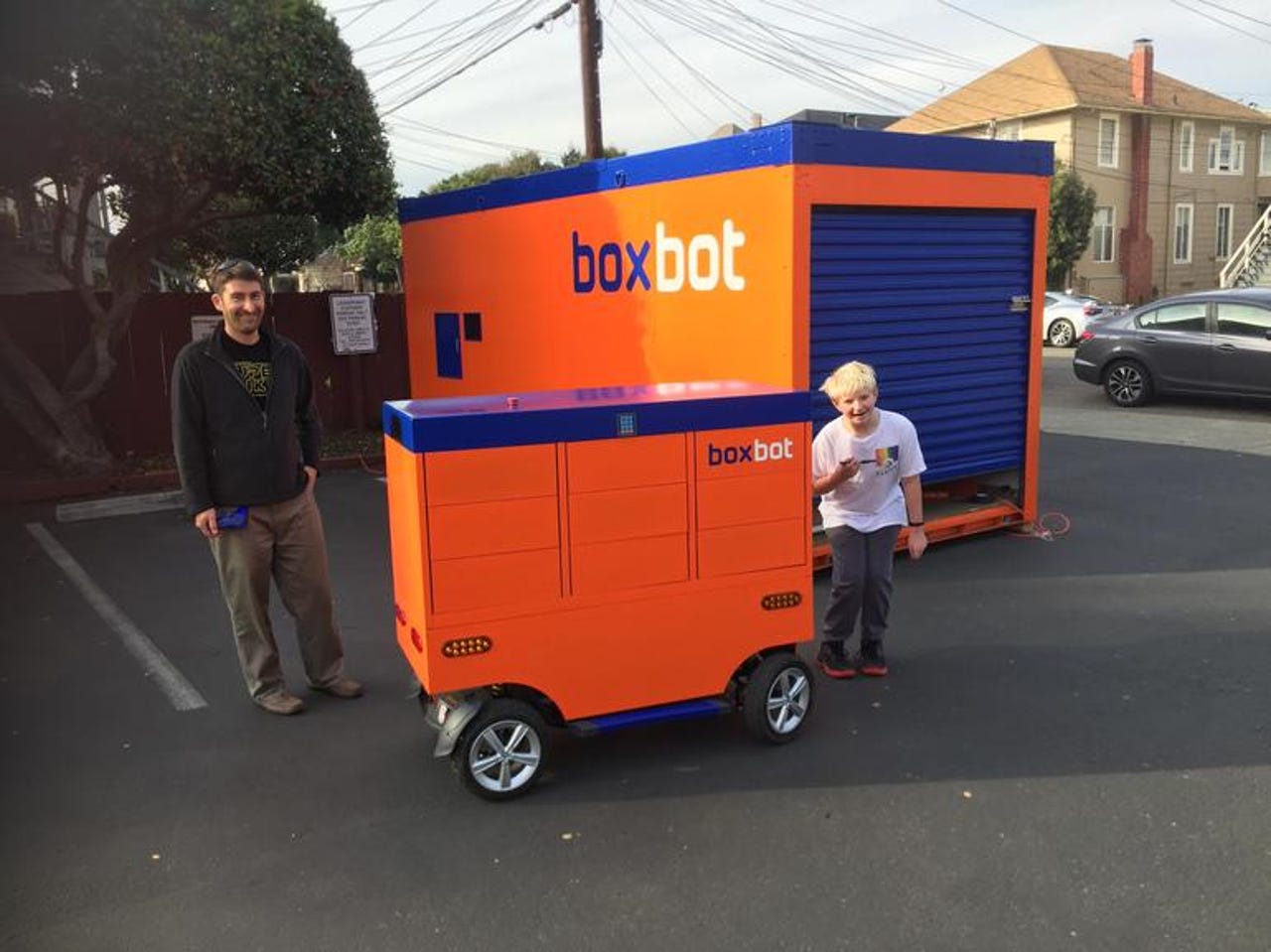11 delivery robots that will soon carry food and packages to your door

Woowa Brothers
A robot named Deli (short for "Delicious Delivery") has been in development by Woowa Brothers, a team out of Korea University, since July.
The project is actually an iterative step toward a more capable robot. Deli is being designed specifically to deliver food in indoor environments, such as food courts.
A second stage of development will produce a robot capable of delivery in compound environments.
Ultimately, the Woowa Brothers team will build an autonomous robot capable of handling sidewalks and city streets, which is the holy grail of driverless delivery.
Amazon
Earlier this year, Amazon kicked this race into hyper-speed when it applied for a patent for its own delivery robot. Why not? Amazon has already remade the logistics and parcel delivery sector.
Like Chinese rival Alibaba, Amazon's stake in the future of last-mile delivery is clear. Its advantage right now is lightning quick delivery, and it has no plans to fall behind a new generation of urban delivery vehicles that will soon give even mom and pops the ability to offer same-day service.
Amazon has even gone a step further than rivals. Its patent application describes a robot that can open doors to safely place packages inside recipients' homes. The Bezos invasion plans are nearly complete!
Marble
Marble uses an advanced sensor payload and high-resolution 3D city maps to efficiently (and, the company is quick to point out, politely) navigate through bustling city streets.
The robots have modular cargo bays that can be swapped out based on payload. "The best way to transport warm meals isn't necessarily the best way to transport medicine."
Based in San Francisco, Marble has about $10 million in funding.

Boxbot
Boxbot, an Oakland startup that makes self-driving delivery robots, just raised $7.5 million in a seed round that included investment from Toyota AI Ventures, the AI-focused venture subsidiary of the recently-formed Toyota Research Institute.
Boxbot has been more secretive with its hardware than competitors Robby or Marble, but the business model is based on building a network of robots and offering access to a variety of vendors. Local news coverage suggested the company is currently testing in Walnut Creek, Calif.
Domino's
DRU, the Domino's Robotic Unit, raised some eyebrows when it debuted in 2016. Frankly, it raised a lot of guffaws. It turns out, Domino's was ahead of the curve, and its continued pursuit of autonomous delivery has given it a surprising lead in the race to automate the pizza industry.
Domino's has now partnered with Starship Technologies on a new six-wheel robot. It has also partnered with a company called Nuance on DRU Assist, an AI app that allows customers to order a pizza intuitively via an AI chat interface.
Thyssenkrupp Elevator
File this one in "out of left field." thyssenkrupp Elevator (which doesn't capitalize its first name, for some reason) makes and services elevators for buildings.
So it's strange that the legacy company is now testing what it's calling a TeleRetail delivery robot. The bot's primary objective? To make elevator maintenance in cities quicker and more efficient by offering last-mile delivery of spare parts to technicians.
"For elevator and escalator servicing, spare parts are needed quickly and a technician either has to drive back to base in his or her service vehicle or have it delivered by a colleague. But with increased traffic clogging up city streets, the pressure on the supply chains is rapidly [mounting]."
It's a safe bet the company has plans for its TeleRetail robot beyond service calls.
Alibaba
This year, e-commerce giant Alibaba announced it's testing a robot for last-mile delivery. The robot uses laser guidance, which resolves environments in much greater detail than camera-based systems.
Specifically, the robot uses microelectromechanical (MEMS) mirrors, a so-called solid-state technology (though it isn't really, just really small) that replaces the rotating mirrors on LiDAR guidance systems with millimeter-scale technology.
Nuro
Nuro's pitch to consumers (and, inevitably, to local and federal legislators still wary of self-driving technology) will be that its pint-sized, battery-powered vans are safer than human-piloted vehicles and will relieve congestion and pollution by taking bigger delivery trucks off of crowded city streets.
Its pitch to enterprise customers will be that the vehicles save money by optimizing delivery routes, decreasing accidents, and reducing workforces.
Nuro's vans contain cubbies that can be fitted with refrigeration or heating units. During delivery, the vehicles pull curbside to allow recipients to access ordered goods.
Robby
This little guy just got a major update.
Under the hood, Robby 2 has a suite of infrared cameras, allowing it to navigate at night. The new design is water and weather resistant, which helps on those wet San Francisco days.
Robby 2 has six wheels, allowing it to climb curbs and traverse rough stretches of sidewalk. It has a range of more than 20 miles on a charge and can be tracked to near-centimeter accuracy, an important consideration for a valuable piece of technology.
Starship Technologies
Launched in 2014, Starship Technologies is the veteran statesman of the autonomous delivery space. The company's goal is to establish a network of autonomous robots that vendors can use to make their goods and meals available for home delivery.
Starship just announced $25 million in funding, placing it ahead of most competitors. Launched by Skype co-founders, the company has a strong leadership and is out to an early lead with more than 100,000 kilometers driven in real-world testbeds.
Dispatch
Dispatch's aptly-named Carry robot can transport up to 100 pounds and has been used in a few test beds to make deliveries on college campuses.
Dispatch's business model is based on partnership contracts. Instead of selling hardware, it plans to sell access to its network of urban delivery vehicles, giving even mom and pops a chance to get in on the delivery game. It's like DoorDash, but without the human face.
It's a good strategy, but Dispatch will need to scale big time for it to be viable. Founded in 2015, the company only has $2 million in reported financing so far, which puts it well behind competitors like Marble.